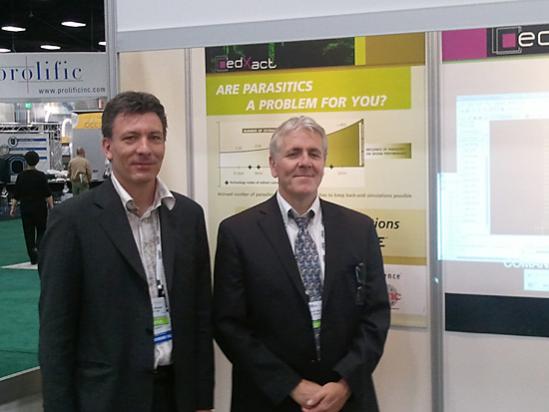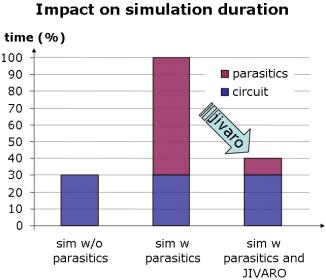Intro
Most EDA parasitic extraction tools have built-in RC reduction with no user control however at DAC I learned how Edxact offers a stand-along RLCK reduction tool for IC designers that want more control over what happens to their extracted netlists.

Daniel Borgraeve (on right)
Notes
Edxact
– Started seven years ago
– Fifteen people in the company
– Based in France
– Jivaro: RLCK reduction (RLCC) with user control of results
o Many algorithms to choose from
o Used by Aglient in their GoldenGate tool (RF Simulator)
o Used by Intel
o About 25 customers world wide (Asia, Japan, Korea, US)
o Part of TSMC AMS Reference flow 2.0
o Pricing starts at $100K per license per year

– Comanche:
o Read parasitic
o Create R values point to point, calculate delays
o CAD developers can compare two netlists (Golden versus some extraction tool)
o Parasitic analysis platform
o Used by: AMD, ST Ericsson
o Pricing starts at $100K per license per year
– Partners
o Altos (Library Characterization, used Jivaro)
o Cadence (Integrated into Virtuoso)
o SpringSoft (Integrated into Laker, can annotate parasitic into Laker)
o Mentor (read DSPF, Eldo formats)
o Synopsps (support Star RC and HSPICE syntax)
o TSMC – part of AMS Reference flow
– Runs on: Solaris, Linux, Mac
Summary
If you want more control while reducing RCLK netlists then consider looking at Edxact tools.





The Intel Common Platform Foundry Alliance